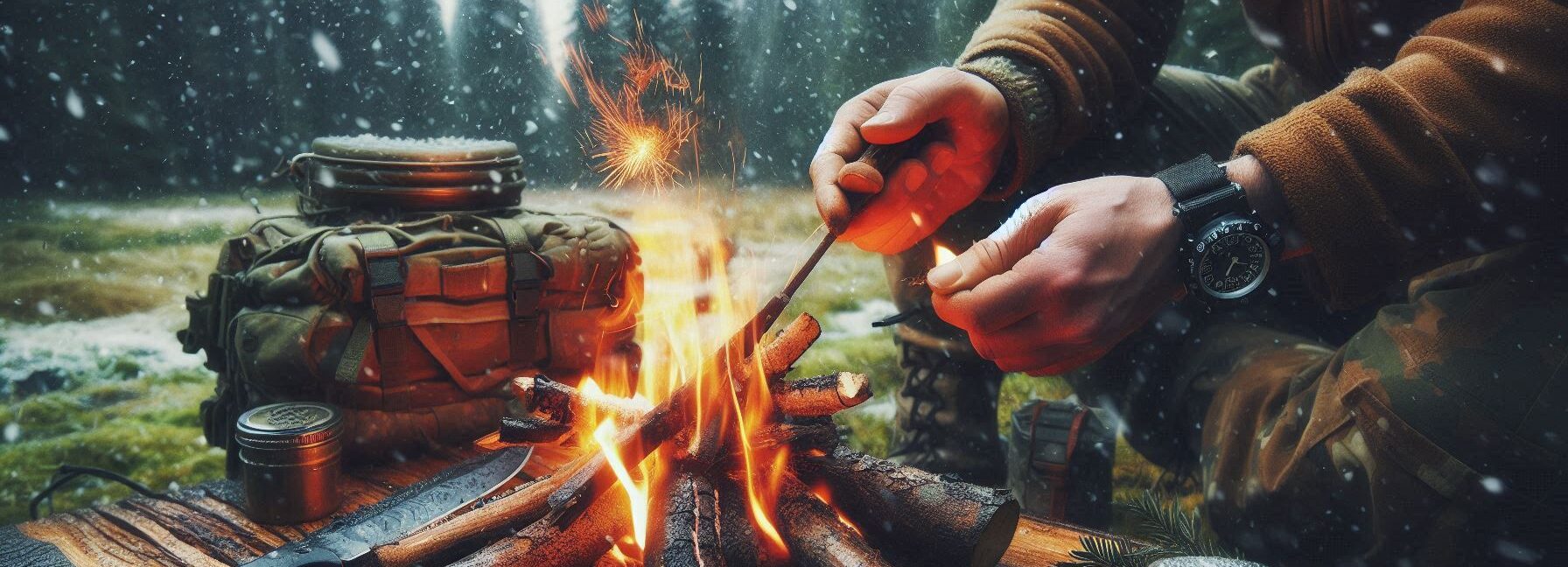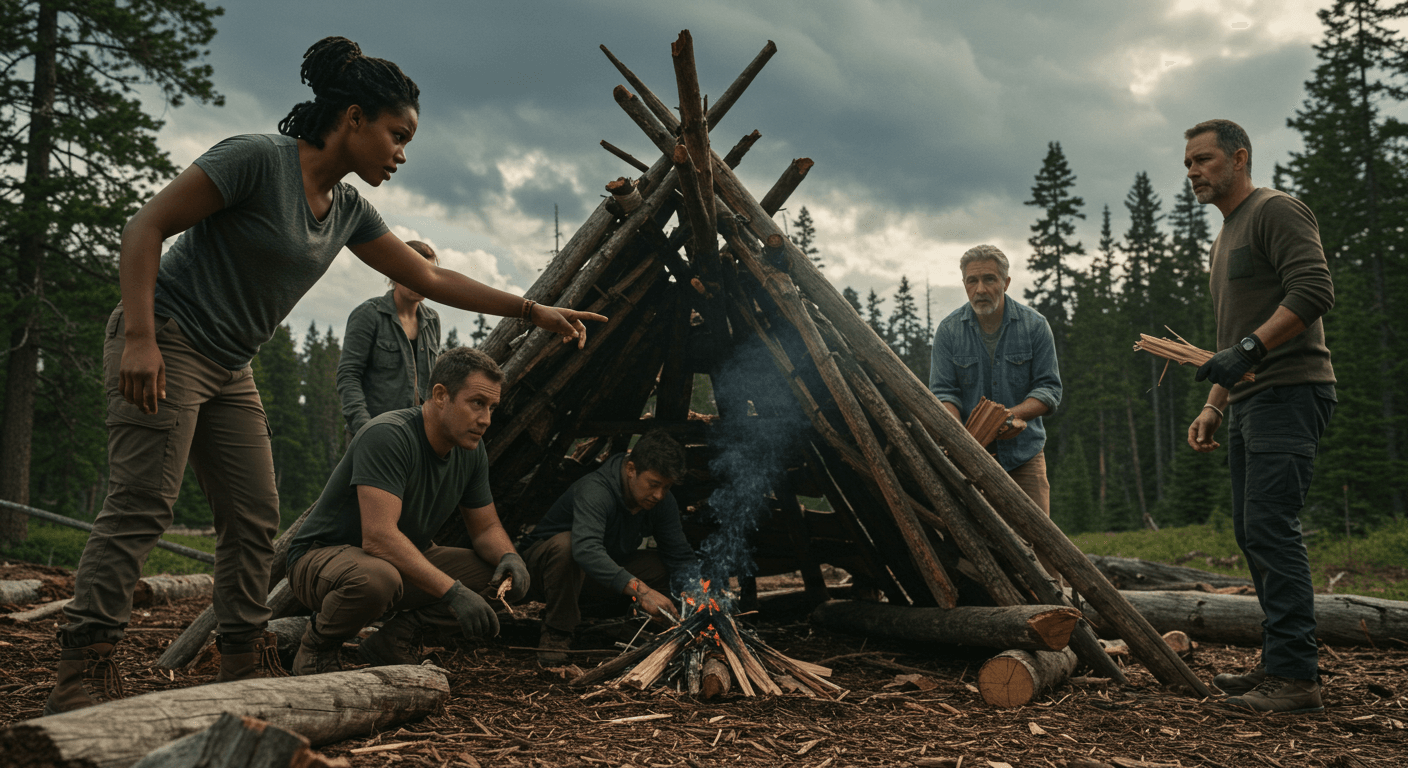Please Note: This post may contain affiliate links. If you click one of them, we may receive a commission at no extra cost to you. As an Amazon Associate, I earn from qualifying purchases.
Last Updated on November 1, 2025 by Kevin Collier

Top Takeaways and Key Concepts
- Identify Safe Shelter Locations: Seek interior rooms without windows on the lowest level.
- Avoid Mobile Homes and Vehicles: These structures are unsafe during extreme weather events.
- Use Helmets and Sturdy Furniture: Protect your head and take cover under heavy furniture.
- Stay Informed with Weather Alerts: Monitor local forecasts and heed official warnings promptly.
- Prepare an Emergency Kit: Include essentials like water, food, flashlight, and first aid supplies.
Imagine you’re out camping, right? You’ve got that cozy little setup, and everything feels perfect. Then, bam! The sky gets darker—like your teenager’s mood on a Sunday night.
You hear thunder rumbling, sounding like one of those angry stomachs. Then it hits. Rain starts pouring down, like a giant shower head turned on above your campsite. Uh-oh!
What now? Panic might seem like the first thing to do, but hold on. You've got this!
Finding shelter is the priority. Look around. Is there a nice sturdy tree? Trees can block a lot of the rain. But, be careful. You don’t want to stand right under one, just in case the wind decides to be a bit mischievous.
A tent is your best friend in storms. If you’ve got one, hop inside. Make sure it's all zipped up tight. If the rain's really coming down, you might even want to toss a rainfly over it. Keep everything dry.
No tent? No problem! Look for rocks or fallen trees. They can help shield you from the rain. Just make sure you’re not in a spot where water might pool up like a mini lake.
While you’re figuring things out, breathe. It’s okay to feel a little scared. The noise and chaos can seem big. But this is just a storm. Nature can be wild sometimes, and it’s all part of the adventure, right?
Grab a snack if you can. A granola bar can turn a gloomy moment into a little boost of happiness. You might even find some fun in watching the storm. Thunder and rain can be pretty dramatic!
Staying safe matters most. Keep your phone handy, too, if you have one. Check for weather updates. It helps to know when the storm might pass.
*** Shop for Survival Gear - Tools - Kits ***
Survival Gear - Bags and Backpacks - Knives - Boots/Footwear - Communication
Outdoor Cooking - Gloves - Hydration - Dry Boxes - Water Filtration Systems
Tents - Sleeping Bags - First Aid Kits - Multi-Tools - Flashlights - Fire Starters
Navigation - Survival Food - Night Vision - Headlamps - Stun Guns - Binoculars
When it finally ends, the world feels fresh. The sky clears up, and everything sparkles. You can go back outside and enjoy the clean air.
Every storm teaches us something. It reminds us to be ready and calm. You’ll come out of this stronger. Plus, you’ll have a wild story to share around the campfire later. 😊🌩️🔥
1. Understanding Weather Warnings

First things first: it's important to know what those dark clouds signify. I remember one camping trip when I confidently said, “A little rain never hurt anyone,” just before we were trapped in what felt like a rainstorm. Spoiler alert: it pained me a lot!
It's true that learning how to read weather warnings might mean the difference between enjoying nature and being on a survival reality show (which sounds fun until you find out there's no prize money).
Listen to the weather reports in your area. Apps can let you know of bad weather. When it reads “tornado watch,” it's not just a weather term; it means you should get ready to find cover.
2. Picking the Right Shelter
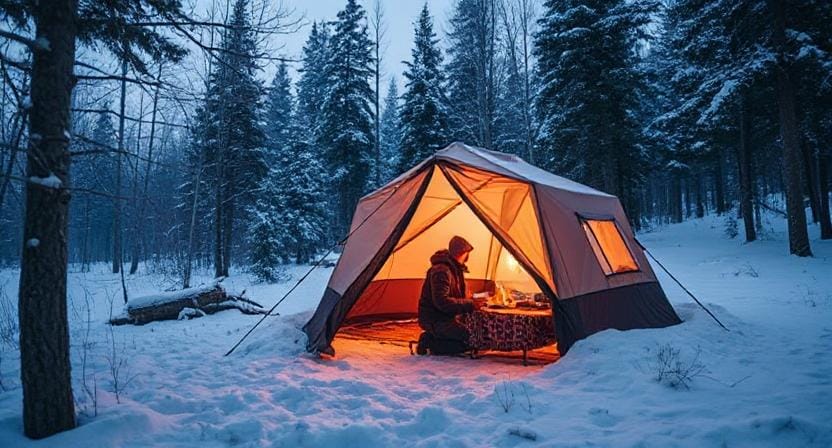
Now that we know there might be difficulty up ahead, let's speak about shelters. The best shelter for you depends on where you are. If you're in a forest, check for thick trees that might block the wind or falling debris, such limbs that seem to want to hit you.
If you have some time, you may use things around you—branches, leaves, or anything else strong enough to keep Mother Nature at bay—to build a temporary shelter.
Imagine that you are an architect with no experience but a lot of passion! A lean-to or debris hut may protect you from rain and wind very well.
If you don't have any gear but do have some big tarps or even ponchos from your previous outdoor expedition gone awry, use them in a creative way! You may make temporary shelters that scream “survival chic” by draping them over branches or tying them down.
3. Looking for Natural Protection
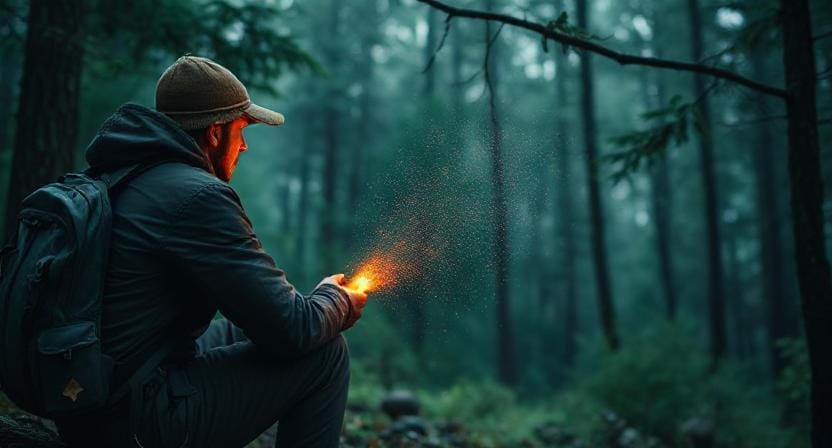
However, if you're not good at construction (and who wants to build something during a storm?), natural features can help keep you safe.
Look for caves or rock overhangs, but first check for bears because being near to animals could not be part of your survival plan.
Another choice is to look for low land that is far away from places where flash floods could happen. Valleys are frequently safer places to be during heavy rains because water tends to flow downhill (who knew physics would save our lives?). Just remember: it's important to get out of the wind, but don't hunker down near rivers—you could need more than just sandwiches!
4. How to Stay Safe in Your Shelter
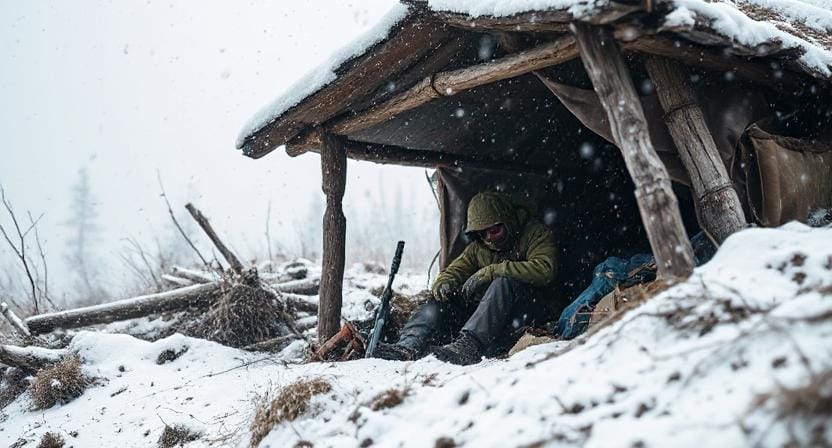
Once you've discovered or built a nice place away from the stormy weather, it's time to focus on staying safe inside. Don't panic; it will simply make things worse (like attempting to flee lightning).
Stay put and make sure you're safe from flying debris by adding anything you have on hand to your shelter.
If it gets cold—and storms love to surprise us with sudden changes in temperature—put on more clothes or even blankets made of leaves or grass (which sounds rustic and cute).
And speaking of how cute things are, try not to think about how wet everything is becoming outside while you're cozy inside. Instead, count the raindrops as they hit your tarp. It's very calming!
5. Making Plans for Emergencies

Now let's talk about emergency planning. Being ready is half the battle when it comes to nature's fury! Before you set out into the wide blue yonder (or gray skies), tell someone who isn't going camping with you your plans. They'll appreciate knowing where you are when they have to send search parties after day three.
Also, think about bringing things like flashlights, not just for the atmosphere but also so you don't trip over tent stakes in the dark while looking for food! A whistle can also be helpful because it is loud enough for rescuers to hear without you having to cry “Help!” every five minutes.
And here's another tip: bring some snacks that won't go bad. Nothing says “I'm surviving” like eating granola bars while you wait out the storm!
6. Safety Checks After The Storm

After the storm, it's time to check for safety again, because just because the sun is shining doesn't mean everything is okay! Look about your camp for dangers; if you tread on a fallen branch, it could transform into a spear.
If you don't want to swim back home, stay away from flooded areas at all costs. Think about whether it's safe to keep hiking or if it's better to wait a little longer. The last thing anyone wants after a storm is to be lost because they can't see well or are confused!
Conclusion
Okay, picture this: you're getting ready for your next expedition outside. You have your gear, your food, and maybe even some marshmallows to roast. But we shouldn't forget about the tarps! Right now, they might look like enormous sheets of disappointment, but when the rain starts, they will save your life.
Think about putting up a tent. The sun is shining, the birds are singing, and everything is just right. Then, all of a sudden, black clouds start to gather. Your heart beats faster. You recall how crazy the previous storm was. But this time, you're ready!
Getting ready is important. Get those tarps and tie them up to make a place to stay. You will be very happy you did. No one wants to get wet while attempting to eat a soggy sandwich. That's just sad. And who wants to look for cover like a lost puppy?
Having munchies on hand makes things better. Listening to the rain fall on a tarp while drinking hot cocoa? That's a nice moment to have! No matter what, try to preserve your smile. If you make the best of it, you'll have a funny story to share later.
Every adventure teaches you something. Think on what you want to do the next time you go out. Think about how to keep yourself secure and dry. You'll be ready for everything nature throws at you, even if it's a little dramatic.
So, let's go outside and have fun. Get your gear together and pack some munchies. You'll be calm when it rains. And if you wind up laughing about it later, you win!
Frequently Asked Questions
Where is the safest location during a severe storm?
The safest area is an interior room on the lowest level with no windows, such as a basement or bathroom.
Why are mobile homes unsafe during storms?
Mobile homes lack structural strength and are easily overturned by high winds or flying debris.
How can I protect myself inside a shelter?
Use helmets, seat cushions, or thick blankets to protect your head and take cover under heavy furniture.
How important are weather alerts during extreme weather?
Weather alerts provide life-saving information and instructions that help you act before dangerous conditions arrive.
What should be in an emergency storm kit?
A kit should include water, non-perishable food, a flashlight, first aid supplies, and extra batteries.
Is it safe to shelter under large trees?
No. Trees can crack, fall, or attract lightning, increasing the risk of injury.
What should I do after the storm passes?
Carefully check surroundings for hazards like loose debris, unstable branches, or flooding before moving from shelter.
Suggested Resources:
Survival Skills: How To Build a Shelter
https://www.survivalskills.com/how-to-build-a-shelter
Weather Safety Tips
https://www.weather.gov/safety
Camping Safety Essentials
https://www.campingsafetyessentials.com

Kevin Collier is a seasoned survivalist and expert in prepping and homesteading, contributing to WiseSurvive.com. With a deep-rooted passion for self-sufficiency and outdoor survival skills, Kevin shares practical advice, strategies, and resources to help individuals prepare for any challenge. His informative articles cover a range of topics, from essential survival techniques to sustainable living practices, empowering readers to thrive in any situation. Whether you're a novice or a seasoned prepper, Kevin's insights will inspire you to take charge of your readiness and build resilience for the future.


